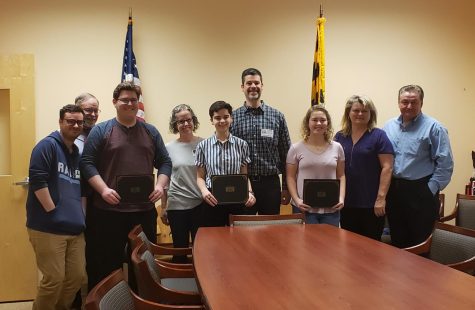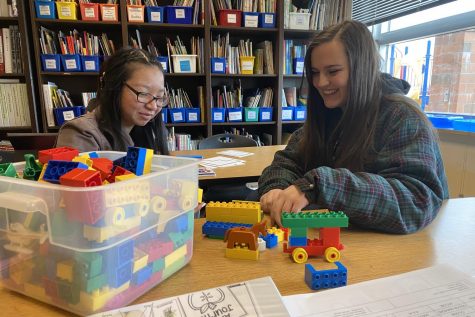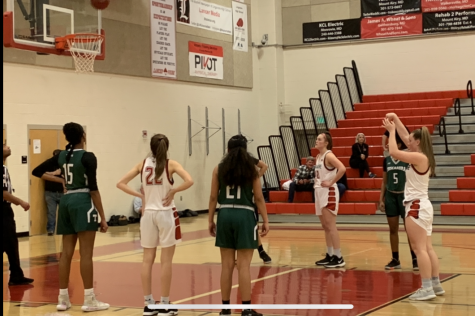Forensic Science creates investigation films: Photo of the Day 9/2/15
Elise Fenstermacher and Emily Barbagello are editing their final crime scene video to then share with the whole class.
September 2, 2015
Lights, camera, bodies. It is just days into the school year and Mrs. Jessica Dillon, Forensic Science teacher, instructed her students to create a crime scene.
Dillon said, “I thought that making a training videos would be more effective to learn about collecting evidence.” Everyone in the class researched how the professionals collect evidence. Then, they were divided into three groups, and each group had to create with a scenario on how someone was killed.
When making the videos, the students got a chance to combine there imaginations with what they learned in class, information from the internet and, of course, crime shows on TV like Criminal Mines, Law and Order, NCIS, and Bones. The challenge was that each group had to show how to collect evidence, chemical, biological, and physical.
Chemical evidence includes drugs, powder from explosives and more. Examples of biological evidence are hair strands, finger nail clippings, blood, and other body materials. Physical evidence is anything that could determine how the victim was killed, things that are around the victim.
At first, coming up with the scenes was difficult, because everyone had to get inside of the brain of a crazy person in order to figure out how someone would kill a human being, but then it was fun because students were sharing their favorite crime show scenes. With a little bit of Caution tape, bags, chalk, and mock blood, the the films came alive.
Creating the videos had helped students learn how to properly gather evidence and how to mark the evidence bags so the lab knows that it was not tampered with.
Dillon was right about the video being fun, Junior Mckenize Gladhill said, “I loved learning how to document different types of evidence.”
After the long first period of playing with fake blood, drawing outlines of the victims, and collecting evidences, the groups had to put their video on the computers to edit them. If taping wasn’t fun enough, the groups had to edit the videos. The only thing that the video had to include were facts about there topic and the rest was up to the students. Some groups added creepy music, happy music, or even bloopers.
After all the hard work at the end of the day everyone agreed that a forensic investigator‘s job is no joke. If the investigators are not careful, the criminals might get away with . . . murder.













